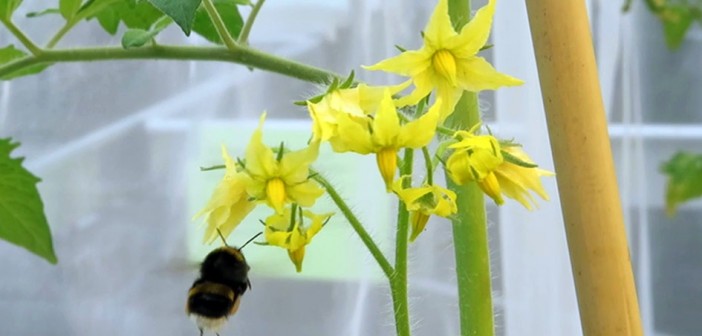Plant scientists at the University of Cambridge have found that the cucumber mosaic virus (CMV) alters gene expression in the tomato plants it infects, causing changes to the scent emitted by the plants. Bees can smell these subtle changes, and glasshouse experiments have shown that bumblebees prefer infected plants over healthy ones.
Scientists say that by indirectly manipulating bee behaviour to improve pollination of infected plants by changing their scent, the virus is effectively paying its host back. This may also benefit the virus: helping to spread the pollen of plants susceptible to infection and, in doing so, inhibiting the chance of virus-resistant plant strains emerging.
CMV is transmitted by aphids – bees don’t carry the virus. It’s one of the most prevalent pathogens affecting tomato plants, resulting in small plants with poor-tasting fruits that can cause serious losses to cultivated crops. As well as being one of the most damaging viruses for horticultural crops, CMV it also persists in wild plant populations, and the new findings may explain why.
“Bees provide a vital pollination service in the production of three-quarters of the world’s food crops. With their numbers in rapid decline, scientists have been searching for ways to harness pollinator power to boost agricultural yields,” said study principal investigator Dr John Carr, Head of Cambridge’s Virology and Molecular Plant Pathology group. “Better understanding the natural chemicals that attract bees could provide ways of enhancing pollination, and attracting bees to good sources of pollen and nectar – which they need for survival.”

Photo Credit: University of Cambridge / Alex M Murphy, Sanjie Jiang and John P Carr
The post Tomatoes with virus attract bees appeared first on Hort News.